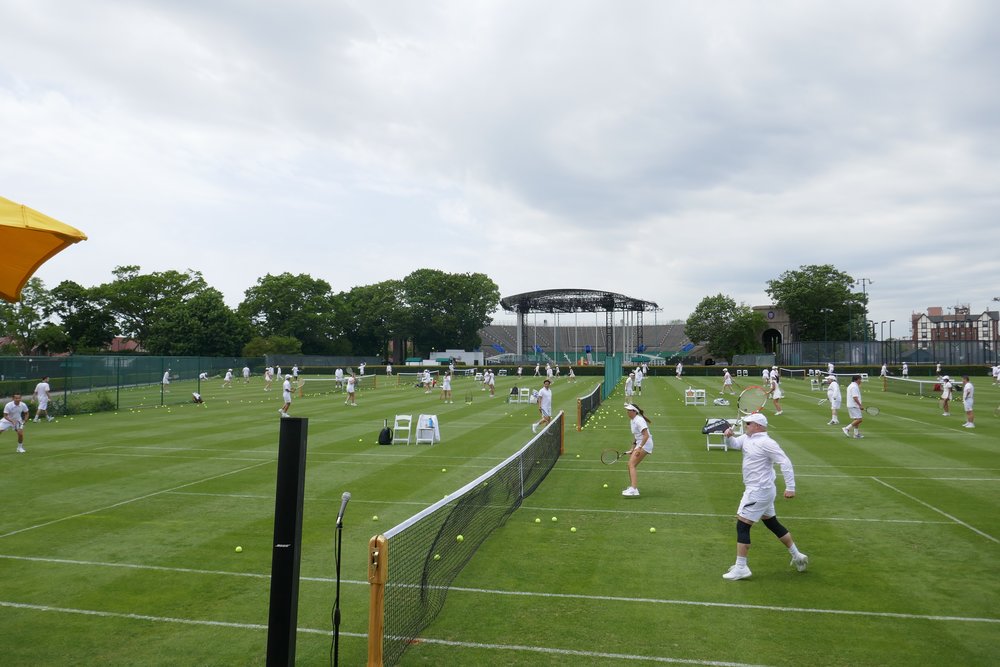Greener horizons at West Side Tennis Club
West Side Tennis Club members and guests were first to play on the newly resurfaced field of eight state-of-the-art grass courts at the iconic Forest Hills club last Friday.
“To have been able to take on a transformational upgrade of our grass courts at this moment in time is a testament to our Board of Governors, our members, and our commitment to our mission,” said club president Monika Jain.
Virginia Wade, who won the 1968 U.S. Open, was a guest of honor.
“I had deja vu watching all these good players out today,” she said. “I know what good grass is like. Grass technology is so sophisticated these days, and it’s so exciting that this club chose to take advice from Wimbledon.
“The WSTC lawns will become the envy of every tradition-loving club and player,” Wade added. “And for those lucky enough to play on them, it will be a blissful experience.”
“My favorite surface in the whole world is grass,” said Rennae Stubbs, a legendary Australian tennis player, coach, and Racquet Magazine podcast host. “It was the first time I ever played here, and it was great to be part of opening the courts for the first time this year. You just have to look around to know you’re in a historic tennis club.”
After WSTC relocated from the Bronx to Forest Hills in 1913, grass was laid for seven courts. The following August, a Davis Cup match would attract an audience of over 12,000, transforming tennis.
The hallowed grounds are where legends like Bill Tilden, Bobby Riggs, Ken Rosewall, Althea Gibson, Arthur Ashe, Billie Jean King, and Chris Evert made their mark on the tennis world.
However, the courts were considered past their prime with spongy and bent grass. After Newport’s International Hall of Fame resurrected its turf venue, WSTC leadership was inspired to examine the feasibility of upgrading its grass courts.
The $650,000 project was designed by Tom Irwin Advisors and spearheaded by Ian Lacy, the former head of Great Britain’s Institute of Groundsmanship Professional Services.
Test pits were dug to evaluate layers of soil, and Lacy and his colleagues recommended a plan to replace the grass, upgrade the irrigation system, enhance the underlying dirt by adding a sand mixture for playability and durability, and regrade the courts.
The grass is a modern blend of three varieties of rye, the same kind used at Wimbledon, the Newport Hall of Fame, and London’s Queens Club.
“The new grass courts are much better, since the ball bounces higher and we can rally and really enjoy it,” said longtime club member Juan Reyes. “Before the ball would hardly bounce.”
The upgrades included Wimbledon-style wooden tennis posts with brass winder mechanisms and “West Side Tennis Club” etchings.
“This is one of the most revered sites, as it was the first home of the U.S. Open,” said Frank Milillo, a pickleball ambassador. “The courts have always been top notch, and it’s exciting to see how well the club improved it with a new lawn. This is where the sport grew, and now it’s coming back to its roots.”




